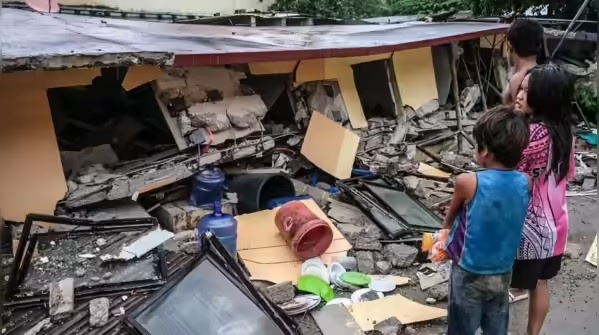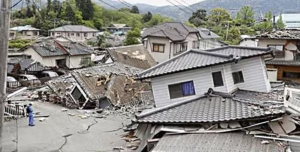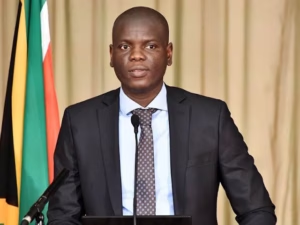A devastating earthquake struck the central Philippines late on Tuesday, claiming at least 69 lives and leaving dozens more injured, according to officials who confirmed the scale of destruction on Wednesday. The tremor, which measured 6.9 in magnitude, rattled northern Cebu and surrounding provinces, displacing thousands, overwhelming hospitals, and sending communities into panic as aftershocks shook the region through the night.
Struggle to Save Lives
In Bogo, a coastal city of approximately 90,000 residents, the earthquake left a trail of wreckage. Soldiers, police officers, and volunteers joined forces with heavy machinery operators and sniffer dogs in a desperate search for survivors beneath the debris. Electricity and water supplies collapsed almost instantly, prompting urgent efforts to restore essential services.
Authorities declared a state of calamity across parts of Cebu as buildings crumbled, roads fractured, and a bridge swayed so violently that passing motorcyclists clung to railings for safety. The city’s main hospital, already strained under normal conditions, was swamped with the injured, forcing staff to operate at the edge of capacity.
Rising Death Toll
More than a dozen people were confirmed dead in nearby Medellin when ceilings and walls caved in on their homes. Local disaster officials have warned that fatalities will continue to mount as rescue teams gain access to remote areas.
The tragedy also struck San Remigio, where Mayor Alfie Reynes revealed that five people lost their lives when the walls of a building collapsed as crowds attempted to escape a basketball game.
Cebu Governor Pamela Baricuatro, whose province is home to more than 3.4 million people and is a major tourist destination, admitted that the real extent of the catastrophe could not yet be determined.
“It could be worse than we think,”
Baricuatro warned in a video message on Facebook, adding that daylight inspections would provide clearer insights into the level of devastation in Bogo and the northern municipalities.
Warnings and Fears
The Philippine Institute of Volcanology and Seismology immediately issued a tsunami alert following the quake. Residents along the coastlines of Cebu, Leyte, and Biliran were urged to evacuate and avoid the shores. Relief came later when the warning was lifted after no abnormal wave activity was observed.
The tremor struck just 19 kilometres from Bogo’s centre and was followed by at least four aftershocks, each measuring magnitude 5.0 or greater. These jolts deepened fears among residents already traumatised by the main quake.
A Country Exposed to Nature’s Wrath
The Philippines, located along the Pacific Ring of Fire, is one of the most disaster-prone nations on the planet. Its geographical position leaves it highly vulnerable to earthquakes, volcanic eruptions, and typhoons. Only a week prior, the region had endured successive storms, Bualoi and Ragasa, compounding the hardship of communities now forced to grapple with yet another disaster.
The timing of the quake has raised difficult questions about the country’s preparedness and resilience. Hospitals in Cebu were swiftly overwhelmed, while emergency shelters faced overcrowding. Residents expressed concern about whether rescue and recovery operations would reach the hardest-hit rural areas in time.
A Region in Mourning
For the families who lost loved ones, the tragedy has altered daily life beyond measure. As authorities continue rescue efforts and assess structural damage, the priority remains saving those trapped under rubble and delivering aid to survivors who now face displacement, hunger, and the absence of basic services.
Officials, while warning that the confirmed death toll will likely rise, have also expressed hope that coordinated relief efforts will mitigate further suffering. The government faces the enormous task of balancing immediate humanitarian needs with long-term rebuilding.

















